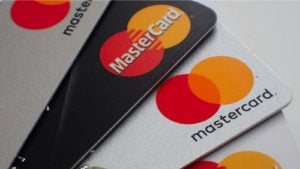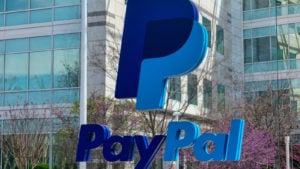3 Must-Buy Fintech Growth Stocks After Fed “Bailouts”

Source: kentoh/Shutterstock
The banking sector has been through a lot lately. The Fed had to step in and bail out some of the biggest names in the industry as they faced a liquidity crisis and a wave of defaults. The ripples in the banking sector have calmed down, with many banks starting to bounce back. However, investors are still wary of a possible recession on the horizon, making them hesitant to take a closer look at financial technology (fintech) growth stocks. Understandably so, as some banks may still collapse, and even if the Fed comes to the rescue, it will be depositors who get their money back, not investors.
That said, the turmoil in the banking sector has caused many fintech names to trade at depressed prices despite solid balance sheets and high growth potential as they move into new markets and segments underserved by incumbents.
Also, I believe that investing in fintech growth stocks is not as risky as some investors think. The Fed has demonstrated that it is committed to preventing a banking crisis and has ample tools and resources to do so. Although some fintech names are associated with these banks, they will also be the ones to be bailed out.
With that in mind, let’s look at three fintech growth stocks:
SoFi Technologies (SOFI)

Source: shutterstock.com/rafapress
SoFi technologies (NASDAQ:SOPHIE) is (essentially) an online bank and one of the fastest growing names in the financial sector. It is unique because SoFi operates entirely online, focusing more on personal loans and student loans. This makes the company’s borrower base much more diversified compared to banks that finance startups or risky institutions. Despite the fact that SoFi is a “bank”, the risk here is low.
As for the balance, it is among the most robust in the industry. It has accelerating revenue growth 82.9% in the 4th quarter, reaching $1.7 billion after twelve months. It is expected to reach $2 billion at the midpoint this year and $2.9 billion in 2024.
Furthermore, the demand for personal loans continues to grow. With traditional banks becoming conservative, it is difficult for individuals to get loans, especially online. It is a tailwind SoFi can exploit in the long run since physical branches are becoming less and less popular.
Mastercard (MA)

Source: David Cardinez / Shutterstock.com
MasterCard (SNEEZE:MA) is finally catching investors’ attention as it delivers some of the strongest growth in the fintech industry. Unlike most industries, Mastercard is benefiting from the rate hikes, and the Fed is likely to stay at 5% for at least a couple of months. It is likely to result in even stronger results in subsequent quarters this year.
The company’s margins are particularly convincing, with net margins of 44.7%, turns Mastercard into an ATM. Operating income decreased slightly, but still grew by double digits to 21.6%and reached $12.3 billion for FY 2022. Revenue growth has also surpassed Visa (SNEEZE:V) and could lead to a more premium valuation if sustained.
It’s a more conservative pick, but I think the upside potential here is enough to make it a must-buy for a growth portfolio.
PayPal (PYPL)

Source: Michael Vi / Shutterstock.com
PayPal (NASDAQ:PYPL) continues to languish below pre-pandemic prices, but it may be time for Wall Street to reverse sentiment on the stock. PayPal’s finances have turned a corner and it’s back to delivery double-digit growth on the bottom line and a healthy growth of 6.7% in the top line.
It’s a household name that I don’t expect to hold at these levels for too long. Growth will eventually return to PayPal in the long term. At the same time, one of its biggest competitors, Block (SNEEZE:SQ), has faced backlash due to the Hindenburg Research report. Therefore, I believe the conditions are ripe for PayPal to resume its growth trajectory in 2023 and beyond.
Furthermore, PayPal generates strong cash flow, spending most of it on share buybacks. It guided $5 billion in FCF this year, with 75% to buy back shares.
The consensus price target here is over $100 but I think $150 or higher is possible.
At the date of publication, Omor Ibne Ehsan did not hold (either directly or indirectly) any positions in the securities mentioned in this article. The opinions expressed in this article are those of the author, subject to the InvestorPlace.com Publishing Guidelines.


